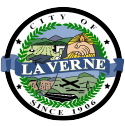The City’s current system is vulnerable to legal challenges. Cities that have been presented with demands for districting have been faced with settling the challenge by paying a minimum of $30,000 and agreeing to go through the districting process to upwards of hundreds of thousands, or even millions, of dollars to fight. By waiting until a legal challenge is presented to the City, the City would face a significantly shorter deadline to go through the districting process than it does before a California Voting Rights Act (CVRA) letter is filed. Pursuing the districting process now is a risk management decision that allows the City to take time to solicit resident feedback on their communities as well as enough time to consider and choose a map.
Additionally, while the City of La Verne is aware of the City of Santa Monica lawsuit challenging its at-large election system, the California Supreme Court’s decision will not come down in time for the June 2022 election. Regardless of the decision, it will not change the state’s law that prohibits racially polarized voting that marginalizes local minority communities. Even if the California Supreme Court rules in favor of the City of Santa Monica, the City of La Verne could still be sued for violation of the CVRA and be forced to district. Furthermore, delaying until the decision in Pico Neighborhood Association and Maria Loya v. City of Santa Monica could jeopardize the legitimacy of the City of La Verne’s June 2022 election results, thereby forcing the City to spend additional funds to undergo another election process. The City Council unanimously decided that exploring the process of districting was the most prudent thing to do considering the significant financial and legal risks associated with remaining with its at-large election system.
